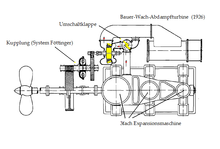
Tango Maru (丹後丸) was a cargo motor ship that was built in Germany in 1926 and sunk off the coast of Bali in 1944. She was launched as Rendsburg for the Deutsch-Australische Dampfschiffs-Gesellschaft (DADG), which in 1926 merged with Hamburg-Amerikanische Packetfahrt-Actien-Gesellschaft (HAPAG).

SS Vaterland was a transatlantic ocean liner that was launched for the Hamburg America Line in 1940 but left incomplete because of the Second World War. An Allied air raid damaged her in 1943, and she was scrapped in 1948.
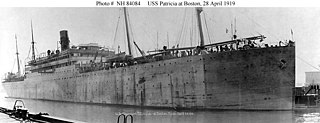
USS Patricia was a transatlantic liner that was launched in Germany in 1899 and spent most of her career with Hamburg America Line (HAPAG). She was the last to be built of a class of four HAPAG sister ships that came from shipyards in the United Kingdom and Germany between 1896 and 1899.

USS Newport News (AK-3) was a cargo liner that was launched in Germany in 1903 as St. Jan. She was renamed Odenwald in 1907 when she changed owners, and Newport News in 1917 when the United States seized her. She was renamed Arctic in 1925, and scrapped in 1937.

USS Mercury (ID-3012) was a United States Navy transport ship during World War I. She was formerly the Norddeutscher Lloyd liner SS Barbarossa built by Blohm & Voss, Hamburg, Germany, in 1897, and operated by the North German Lloyd Line.
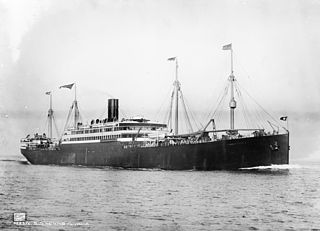
SS Pennsylvania was a transatlantic liner that was launched in Ireland in 1896 and spent most of her career with Hamburg America Line (HAPAG). She was the first of a class of four HAPAG sister ships that were built in the United Kingdom and Germany between 1896 and 1899.
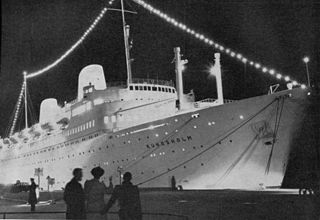
MS Kungsholm was a combined ocean liner / cruise ship built in 1953 by the De Schelde shipyard in Vlissingen, the Netherlands for the Swedish American Line. Between 1965 and 1981 she sailed for the North German Lloyd and their successor Hapag-Lloyd as MS Europa. From 1981 until 1984 she sailed for Costa Cruises as MS Columbus C. She sank in the port of Cadiz, Spain after ramming a breakwater on 29 July 1984. The vessel was refloated later that year, but sent to a Barcelona shipbreaker in 1985 for scrapping.

USS Covington (ID-1409) was a German transatlantic ocean liner that was launched in 1908 for the Hamburg America Line (HAPAG) as Cincinnati. In 1917 the United States seized her, had her converted into a troop ship and renamed her Covington. In 1918 SM U-86 torpedoed her, killing six of her complement. Three tugs towed her about 1/3 the way to Brest, but she sank the afternoon of 2 July 1918.

USS Maartensdijk was a cargo steamship that was laid down in England in 1902 as Egyptiana, but launched as Rapallo. She served in the United States Navy as USS Maartensdijk from 1918 until 1919, with the Naval Registry Identification Number ID-2497.

USS Shoshone (ID-1760) was a German-built cargo liner that the United States Navy chartered during the First World War. She was launched in 1911 for the Hamburg America Line (HAPAG) as Wasgenwald. The Kerr Steamship Company bought her in 1917 and renamed her Shoshone. In 1919 she spent six months in the United States Navy, in which she made two round trips to and from France to repatriate US troops.

SS Ypiranga was a cargo liner that was launched in Germany in 1908 for the Hamburg America Line (HAPAG). In 1919 the United Kingdom seized her for World War I reparations. In 1921 Anchor Line acquired her and renamed her Assyria. In 1929 the Companhia Colonial de Navegação (CCN) bought her and renamed her Colonial. In 1950 she was sold for scrap, but she sank off the coast of Scotland while being towed to a scrapyard.

USS General W. C. Gorgas (ID-1365) was a cargo liner that was launched in Germany in 1902 as Prinz Sigismund for the Hamburg America Line. In 1917 the USA seized her and renamed her General W. C. Gorgas. In 1945 she was transferred to the Soviet Union, which renamed her Mikhail Lomonosov. She was scrapped in March 1958.

USS Pretoria was a transatlantic liner that was launched in Germany in 1897 and spent most of her career with Hamburg America Line (HAPAG). She was the second of a class of four HAPAG sister ships that were built in the United Kingdom and Germany between 1896 and 1899.

Kronprinzessin Cecilie was a Hamburg America Line (HAPAG) ocean liner. She was launched in Schleswig-Holstein in 1905. Her scheduled route was between Hamburg and Mexico.

USS Arcadia (ID-1605) was a transatlantic liner that was launched in Ireland in 1896 and spent most of her career with Hamburg America Line (HAPAG). She was one of a series of at least five HAPAG sister ships that were built in the United Kingdom in 1896 and 1897.

SS Cap Polonio was a German 20,576 GRT ocean liner that was launched in 1914 and scrapped in 1935. She worked the Hamburg Südamerikanische Dampfschifffahrtsgesellschaft route between Hamburg in Germany and Buenos Aires in Argentina. She was named after Cabo Polonio in Uruguay.
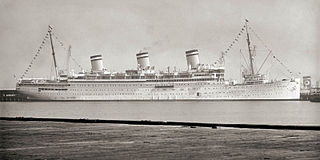
SS Reliance was one of a pair of transatlantic steam ocean liners that were launched in 1914 in Germany for the Hamburg America Line (HAPAG), sold to a Dutch shipping line in 1916, and seized by the United States as World War I reparations in 1922. United American Lines (UAL) operated her until 1926, when HAPAG bought her back.
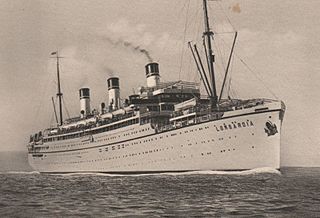
SS Lombardia was one of a pair of transatlantic steam ocean liners that were launched in 1914 in Germany for the Hamburg America Line (HAPAG), sold to a Dutch shipping line in 1916, and seized by the United States as World War I reparations in 1922. United American Lines (UAL) operated her until 1926, when HAPAG bought her back.
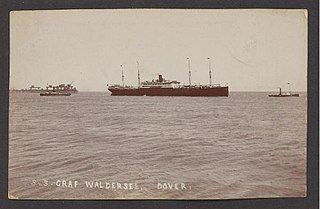
SS Graf Waldersee was a transatlantic liner that was launched in Germany in 1898 and spent most of her career with Hamburg America Line (HAPAG). She was the third of a class of four HAPAG sister ships that were built in the United Kingdom and Germany between 1896 and 1899.

Empire Mariner was a cargo steamship. She was built in Germany in 1922 for Hamburg America Line (HAPAG), who named her Schwarzwald. In 1935 H. Vogemann bought her and renamed her Rheingold. In October 1939 a Royal Navy cruiser captured her, and the United Kingdom government renamed her as the Empire ship Empire Mariner. She survived numerous transatlantic convoys in the Battle of the Atlantic. In 1946 South American Saint Line bought her and renamed her Saint Ina. In 1948 Bristol City Line bought her and renamed her Wells City. In 1951 the Pakistani-owned East & West Steamship Company bought her and renamed her Fausta. She was scrapped in Pakistan in 1964.

